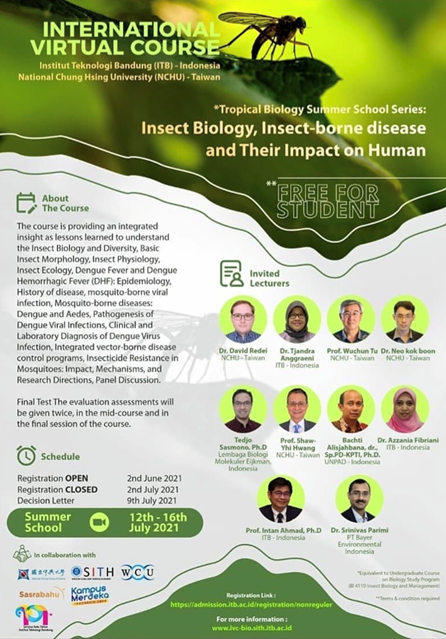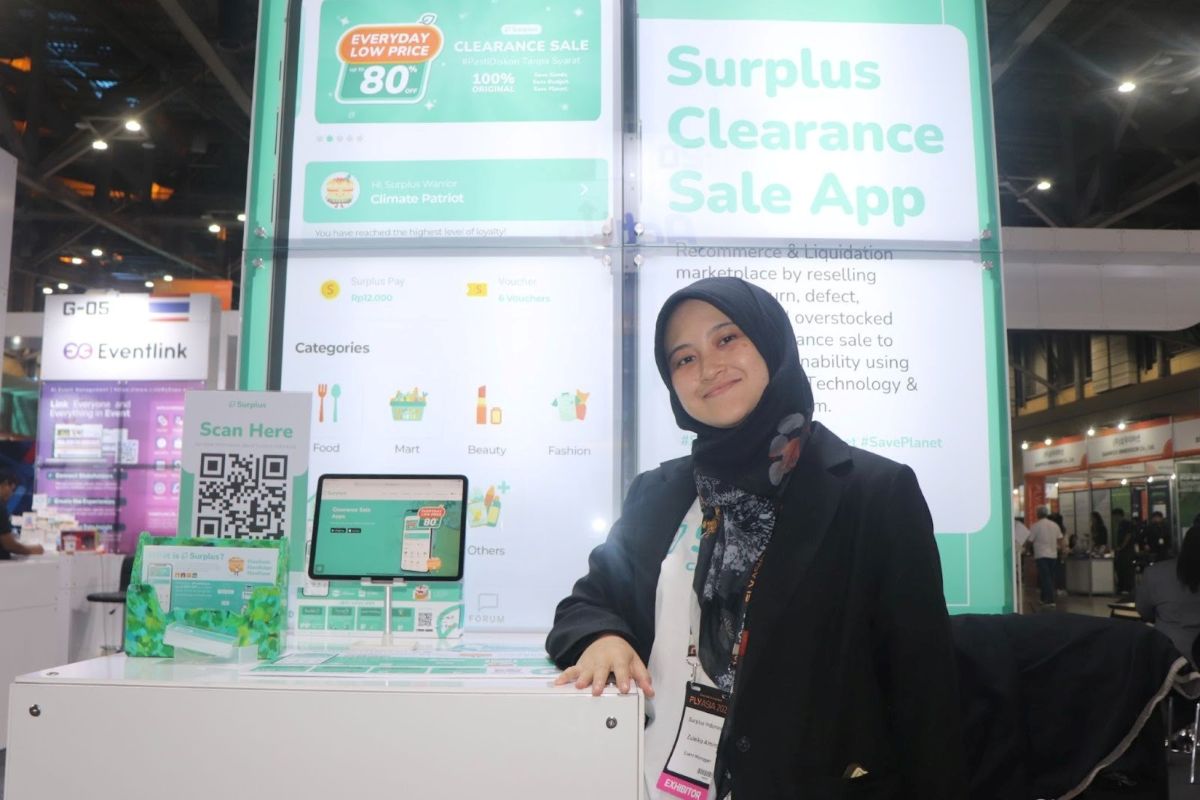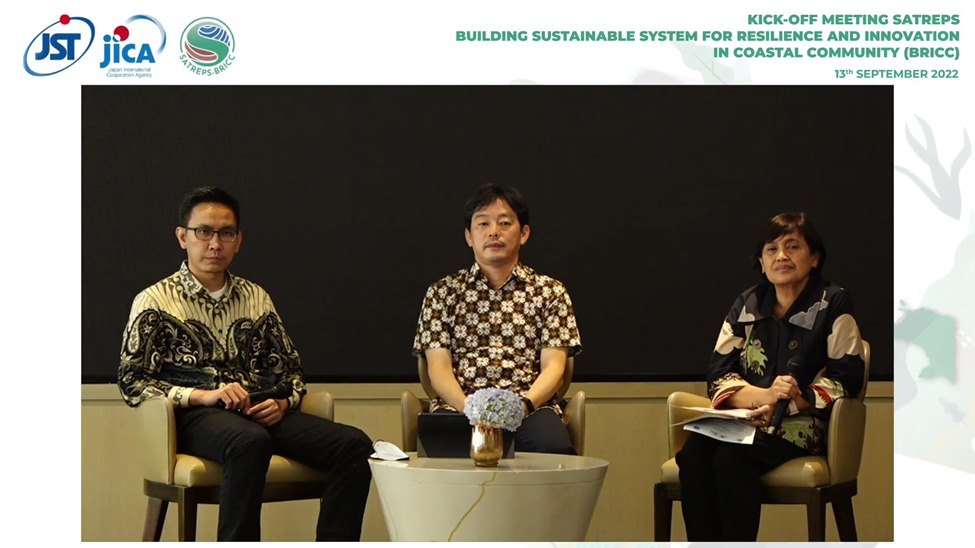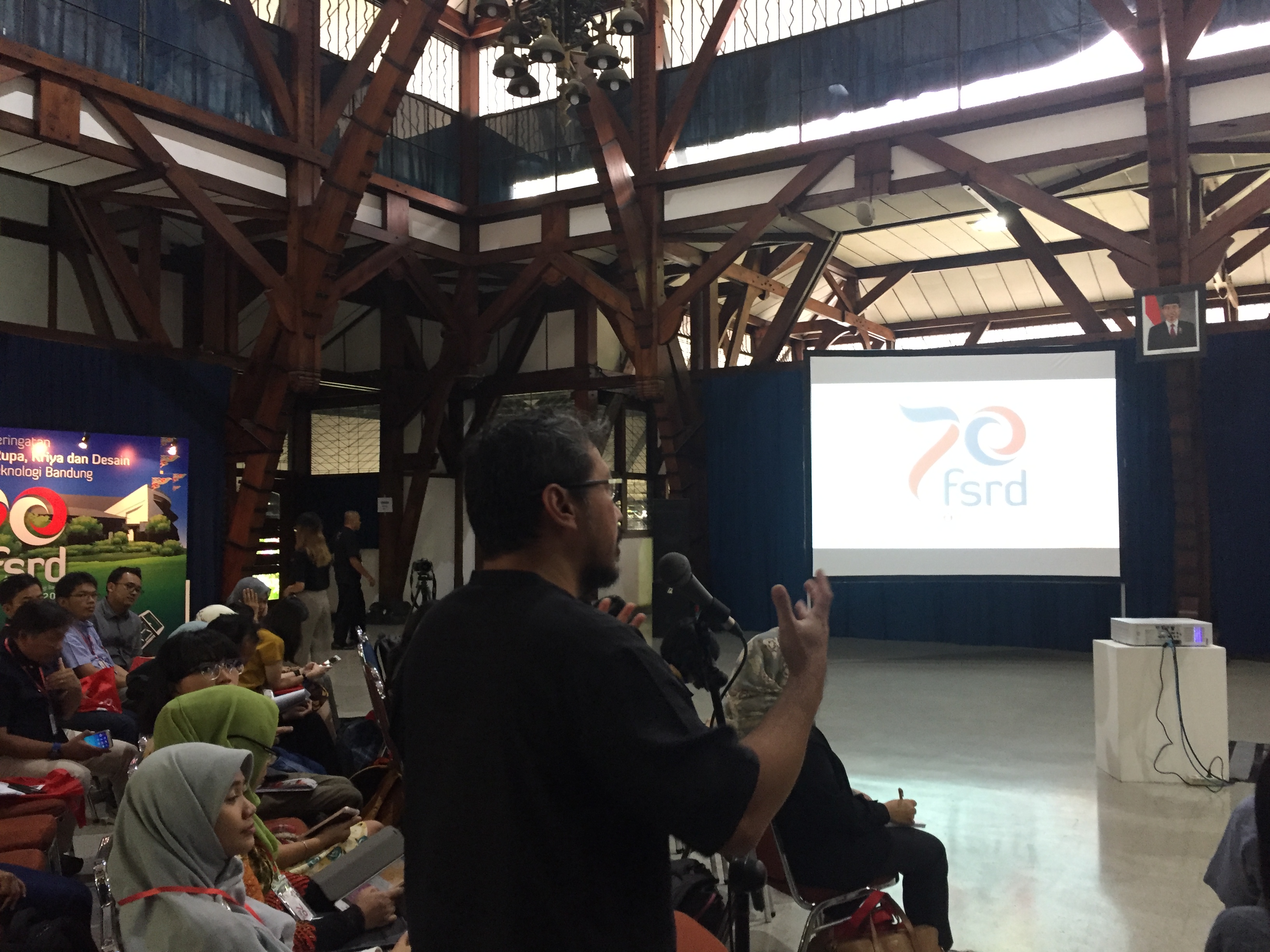International Virtual Course About Dengue Fever by SITH ITB and NCHU Taiwan
By Adi Permana
Editor Adi Permana

BANDUNG, itb.ac.id – Dengue fever cases in Indonesia are severe, in which one of its causes is the Aedes aegypti mosquitoes. The biology study program of SITH (School of Life Science and Technology) ITB organized an international virtual course (IVC) titled “Insect Biology, Insect-borne Diseases and Their Impact on Human” to discuss and solve the issues concerning dengue fever.
This class is a collaboration between SITH ITB and NCHU (National Chung Hsing University) from Taiwan. It was held from Monday to Friday (12-16/7/2021) via Zoom and Edunex.
The event started with introductions by Prof. Dr. Andri Dian Nugraha (Director of Non-Regular Education of ITB), Prof. Dr. Shaw-Yhi Hwang (Vice Dean of College of Agriculture and Natural Resources of NCHU), and Endah Sulistyawati, Ph. D. (Dean of SITH ITB).
This IVC is part of SITH ITB and NCHU's joint efforts in tackling the dengue fever dilemma in Indonesia, especially in Bandung. As part of the MBKM program, the class implements a credit learning system, covering the materials taught in the elective course of Insect Biology and Management. Throughout the program, evaluation is done via mid-term and final tests.
The purpose of this international class is to shed light on the importance of insects studies. Below the arthropod phylum of the animal kingdom is the Insecta class that houses the highest population and species variations. They also spread diseases such as dengue fever that is still prevalent in Indonesia.

Dengue fever is transmitted by the viruses of the Flaviviridae family. These viruses reside inside mosquitoes after they bite infected humans. The common genus of the mosquitoes that host this disease is Aedes. Researchers are seeking ways to control the insect population, in which one of them is by using DDT.
Despite the success of DDT, many side effects arise from its usage and the environment is gradually gaining resistance towards it. Hence, Indonesia has attempted early precautions like the 3M program. This agenda involves draining, sealing, and burying the source of infection. By clearing stagnant puddles away, egg-laying sites of mosquitoes are reduced.
Reporter: Alvina Putri Nabilah (Biologi, 2019)
Translator: Ruth Nathania (Teknik Lingkungan, 2019)

.jpg)

.jpg)
.jpg)
.jpg)


